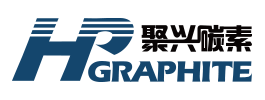【EAF Steel】How to Achieve the 15% Target by 2025 as Scheduled?

Graphite electrodes are the essential consumables in electric arc furnace (EAF) steelmaking. Due to their outstanding electrical conductivity and excellent high-temperature resistance, they play a critical role in ensuring efficient and stable furnace operation, thereby improving steel production capacity and product quality.
【EAF Steel】How to Achieve the 15% Target by 2025 as Scheduled?
The Catalogue for Guiding Industry Restructuring (2024 Edition) (hereinafter referred to as the "new Guiding Catalogue"), which came into effect on February 1, 2024, still consists of three categories: encouraged, restricted, and eliminated. For the steel industry, it includes 7 items in the encouraged category, 21 in the restricted category, and 23 in the eliminated category. During the public consultation stage of the new Guiding Catalogue, the highly discussed proposal to lower the upper limit of the rated capacity range for restricted electric arc furnace (EAF) equipment was not adopted. The wording remains as "electric arc furnaces with a rated capacity of more than 30 tonnes but less than 100 tonnes (less than 50 tonnes for alloy steel)." In addition, regarding the description of outdated production equipment to be eliminated, such as "blast furnaces for steelmaking pig iron with a capacity of 400 cubic meters or less (450 cubic meters or less in Hebei Province)," no adjustments have been made. So, in the face of the goal for short-process steelmaking to account for 15% of total production by 2025, how should the development of EAF steel be promoted in an orderly manner?
In the Short Term, Focus on Improving EAF Steel Capacity Utilization
The Catalogue for Guiding Industry Restructuring (2005 Edition) (hereinafter referred to as the "2005 Edition") listed restricted EAFs as "electric furnaces with a rated capacity of less than 70 tonnes, or electric furnaces with a rated capacity of 70 tonnes or more without dust collection systems, and with energy consumption, fresh water consumption, and other indicators not meeting standards." The Catalogue for Guiding Industry Restructuring (2011 Edition) (hereinafter referred to as the "2011 Edition") defined restricted EAFs as "electric furnaces with a rated capacity of more than 30 tonnes but less than 100 tonnes (less than 50 tonnes for alloy steel); electric furnaces with a rated capacity of 100 tonnes (50 tonnes for alloy steel) or more without dust collection systems, and with energy consumption greater than 98 kg of standard coal/tonne, fresh water consumption greater than 3.2 m³/tonne, and other indicators not meeting standards." Since the 2011 Edition, through to the new Guiding Catalogue that will soon take effect on February 1 this year, the rated capacity range for restricted EAFs has remained unchanged.
With the elimination of 140 million tonnes of "ditiao steel" (illegal induction furnace steel), China's EAF steel industry has entered a new stage of development. The Action Plan for Continuous Improvement of Air Quality issued by the State Council proposes that "by 2025, short-process steelmaking will account for 15% of total steel production," creating policy space for the development of the EAF steel industry. At present, there is less than two years left to meet the target for the share of short-process steelmaking by the end of 2025. According to estimates, in 2023, China's total EAF steel output will again exceed 100 million tonnes, but the proportion of EAF steel in total crude steel production will still be less than 10%.
According to incomplete statistics, as of the end of 2023, China had 417 EAF units (including existing, newly built, and under-construction), with a total annual capacity of about 220 million tonnes. In 2023 alone, newly announced EAF equipment involved 17 units, including 10 with a rated capacity of 100 tonnes or more and 7 alloy steel EAFs, with a total annual capacity of 11.83 million tonnes. It can be seen that even excluding EAF capacity not yet in operation, China's EAF steel capacity utilization rate has long fluctuated around 50%. Achieving the target proportion of EAF steel in total crude steel production should not depend on the number or capacity of EAF units; the key is how to improve EAF capacity utilization.
Assuming China's total crude steel capacity in 2025 is 1 billion tonnes, and short-process steelmaking reaches 15%, the corresponding output will be 150 million tonnes. If calculated based on a total EAF steel capacity of 200 million tonnes, the capacity utilization rate would need to reach 75%. Achieving this rate cannot rely solely on 100-tonne-and-above EAFs or 50-tonne-and-above alloy steel EAFs, but requires the average utilization rate of all EAFs, including restricted ones, to reach 75%. Although, with improvements in EAF smelting technology and equipment, some newly built EAFs can achieve or exceed 150% capacity utilization, due to constraints such as insufficient scrap resources, tight electricity supply, and high average electricity prices, companies will not operate at high utilization for long if it means sustained losses.
Therefore, from now until the end of 2025, it is recommended to temporarily suspend policy requirements for the mandatory transformation of restricted EAFs, and to avoid or minimize the introduction of differentiated policies against restricted EAFs. The priority should be to ensure that existing EAF companies can survive, and to avoid or minimize reductions in existing short-process steel production. Once the 2025 target for the share of short-process steelmaking is achieved and the steel industry recovers, the upgrading and replacement of restricted EAFs can then be considered.
Focus on Common Technology Breakthroughs for 100-Tonne-and-Above EAFs
In the early stages of China's EAF development, the focus was on smelting special steel, with little use of EAFs for ordinary steel. As a result, most EAFs had rated capacities below 100 tonnes, although there were exceptions, such as Angang Lianzhong's 150-tonne custom-built EAF for stainless steel production.
After the elimination of "ditiao steel," foreign EAF equipment manufacturers such as Danieli, Tenova, Primetals, and SMS supplied China with a number of EAFs rated at 100 tonnes or more. However, most of these EAFs are used for ordinary steel production, mainly traditional construction steel. On the one hand, many companies building large new EAFs are private enterprises that lack independent R&D teams for developing new steel grades, and their supporting hot rolling mills are also designed for construction steel. Due to site constraints, it is almost impossible to build new rolling lines for other steel types, and companies are unlikely to spend large sums dismantling existing lines for reconstruction. On the other hand, foreign EAF equipment and integrated software systems are highly mature and closed; during the pandemic, delivery and commissioning of some equipment were affected by the inability of technical personnel to visit the plants. As a result, the operation of newly commissioned equipment was not as smooth as expected. Even with prepared smelting technology, it is not easy to integrate and implement it in existing system platforms.
It is undeniable that foreign EAF equipment is overall more advanced than domestic equipment. Moreover, these suppliers conduct both cross-company and intra-company horizontal and vertical comparisons of process parameters for the same models or batches of EAFs commissioned in China, thereby not only continuously optimizing existing EAF process parameters, but also enabling new EAF designs to be optimized from the outset.
For major domestic EAF suppliers, market share leaders such as Changchun Electric Furnace and Wuxi Dongxiong still mainly focus on producing the furnace body itself, without the capability to provide complete solutions. China Metallurgical Group subsidiaries such as MCC-Sichuan Heavy Industry and MCC Jingcheng have developed their own integrated solutions similar to those of foreign manufacturers, but their maturity and market share will still require time to be tested.
At present, the key common technology breakthroughs for 100-tonne-and-above EAFs depend on what steel grades are to be smelted, i.e., the composition requirements of finished steel should guide the technical requirement checklist for EAF smelting. This will require collaboration between downstream users, steel mills, research institutes, and universities, with clear division of labor to build technical reserves. EAF equipment suppliers, design institutes, and universities should devote major effort to integrated EAF equipment solutions, working together in areas such as process parameter indicators, modular design, final molten steel composition, and system integration, to quickly match foreign EAF standards. This includes achieving domestic large-scale, systematized integration, development, and application of EAFs with rated capacities of 150 tonnes or more.
In terms of using a high proportion of green electricity in EAFs, steel mills, EAF suppliers, and power companies such as State Grid and China Southern Power Grid should jointly carry out modifications to external power grids, substations, and EAF power supply facilities to form universally applicable green electricity direct-supply solutions for EAF enterprises, and promote them nationwide as soon as possible. It is also recommended to use processes such as HBIS Group's and Zhanjiang Iron & Steel's hydrogen-based shaft furnace + large EAF smelting as a foundation to quickly develop a technical route suitable for large EAFs using a high proportion of direct reduced iron (DRI). This would provide technical support and guarantees for more domestic EAFs using DRI or hot briquetted iron (HBI) as raw materials, laying the foundation for further increasing the share of short-process steelmaking.
Recommendation to Temporarily Refrain from Raising Blast Furnace Elimination Capacity Standards
The 2005 Edition of the Guiding Catalogue required the elimination of blast furnaces of 300 cubic meters or less by the end of 2007. Since the 2011 Edition, blast furnaces of 400 cubic meters or less were classified as eliminated equipment, and in the 2019 Edition, Hebei Province's elimination standard was raised to 450 cubic meters or less. In the upcoming new Guiding Catalogue, the national capacity standard for blast furnaces to be eliminated remains unchanged. According to research, there are basically no operating blast furnaces in China of 400 cubic meters or less, and the only remaining 450-cubic-meter blast furnaces in Hebei are already idle. It can be said that China has basically completed the shutdown, replacement, and dismantling of blast furnaces in the eliminated category.
According to incomplete statistics, China currently has fewer than 900 blast furnaces, of which more than 300 have a capacity of less than 1,000 cubic meters. Among blast furnaces under 1,000 cubic meters, those under 500 cubic meters account for the largest share, and these are already on the verge of elimination. If the elimination standard were raised in the future, these 300-plus small blast furnaces would inevitably face shutdown. At present, there are more than 360 blast furnaces with capacities in the range of 1,200–2,000 cubic meters, and over 160 with capacities above 2,000 cubic meters. Although China has been promoting larger blast furnaces for some time, apart from a few coastal steel production bases such as Caofeidian in Hebei, Rizhao in Shandong, and Zhanjiang in Guangdong, which have taken advantage of coastal logistics to build blast furnaces exceeding 5,000 cubic meters, inland projects still rely on capacity replacement—closing multiple small blast furnaces to build one or more around 2,000 cubic meters—which is seen as the mainstream choice. The main reasons are that larger blast furnaces have higher upfront construction costs and, in later operation, require consistently high-quality raw materials and have less operational flexibility.
Therefore, it is recommended not to raise the elimination capacity standard for blast furnaces in the short term. The main considerations are:
1) If the elimination standard were raised by just 100 cubic meters, nearly 300 blast furnaces would be classified as eliminated. In the current steel market, this would be akin to the "last straw" for some enterprises.
2) Compared to larger blast furnaces, small blast furnaces have overall lower raw material requirements and simpler operation. As long as environmental retrofits are complete and emissions meet standards, they still have market competitiveness.
3) In terms of process flow matching, if blast furnace capacity standards are uniformly raised, small blast furnaces would have to be replaced with larger ones. This would require synchronous "small-to-large" upgrades in the steelmaking stage, whether using basic oxygen furnaces or EAFs, which demands high capital investment. Moreover, this is only feasible if enterprises already have multiple small blast furnaces and can achieve it through capacity replacement.
4) An alternative approach would be to add EAFs after small blast furnaces. Newly built EAFs could consume urban waste, use part of the hot metal, ease concerns over scrap shortages, and form a "small blast furnace + EAF" model, further enriching the concept of "urban steel plants."

Source: China Metallurgical News – China Steel News Network
Feel free to contact us anytime for more information about the EAF Steel market. Our team is dedicated to providing you with in-depth insights and customized assistance based on your needs. Whether you have questions about product specifications, market trends, or pricing, we are here to help.
No related results found








0 Replies